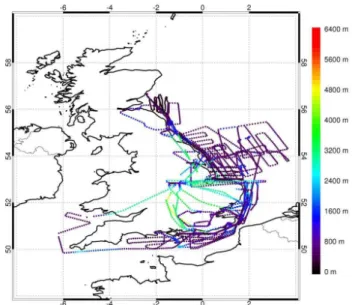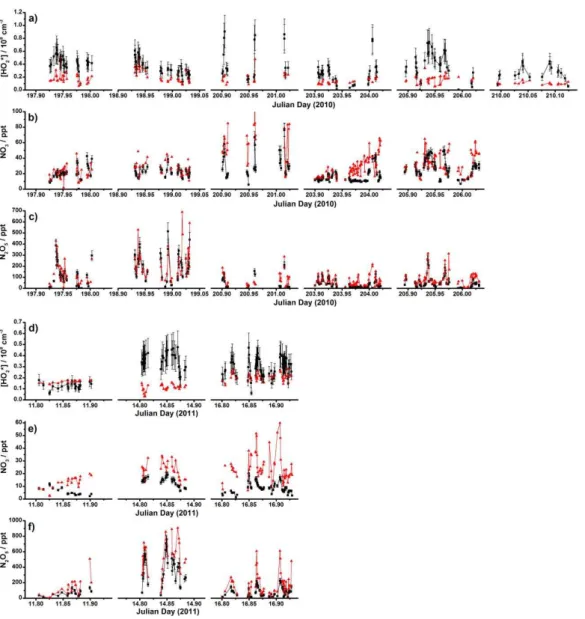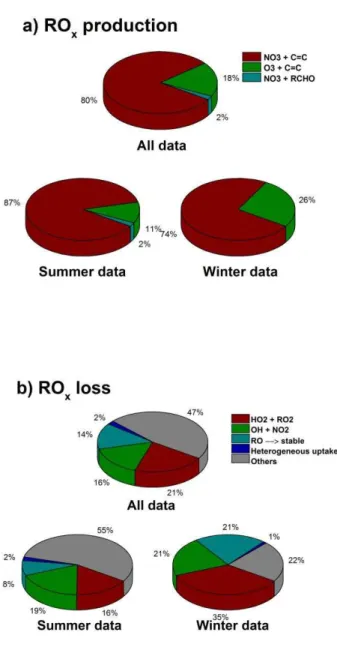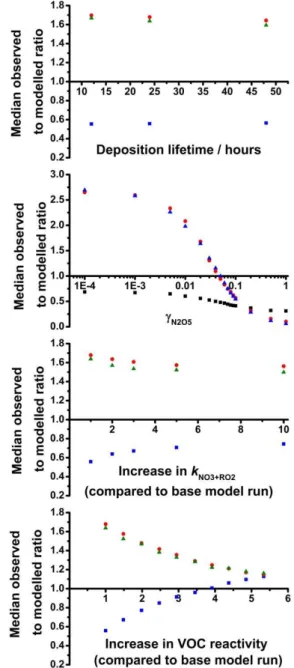Radical chemistry at night: comparisons between observed and modelled HO<sub>x</sub>, NO<sub>3</sub> and N<sub>2</sub>O<sub>5</sub> during the RONOCO project
Texto
Imagem


![Fig. 2. Comparison of modelled and observed concentrations of (a) HO 2 * (all data), [HO 2 *] mod = {(0.5 ± 0.1) × [HO 2 *] obs } + (3.0 ± 2.2)](https://thumb-eu.123doks.com/thumbv2/123dok_br/18309135.348551/7.892.94.808.91.621/fig-comparison-modelled-observed-concentrations-ho-data-ho.webp)

Documentos relacionados
The interest has been driven by the success of advanced data assimilation methods in numerical weather prediction (Rabier, 2005), as well as by development of operational
transport model and a minimum variance Bayesian inverse method was used to estimate annual emission rates using the measurements, with a priori estimates from the Emis- sions
The framework is based on a mass balance ap- proach and given that for Europe most of the components have been independently estimated, di ff erent accounting schemes may be used
To evaluate which emissions database describes butanes and pentanes most re- alistically, an additional simulation (denoted “E2”) was per- formed, using the butanes and
In addition to continuous measurement of the laser power throughout the field exper- iments, the instrument’s Raman scattering sensitivity was measured nightly by over- flowing
All other long- lived forcing terms reflect the steady state response of the atmosphere to sustained aircraft NO x emissions of the year 2000, based on methane lifetime changes due
(2002), which showed that, although the range of mixing ratios at the South Pole in summer were con- siderably higher than observed at Halley during the winter (< 5 to 54 pptv for
Another impact of non-acyl peroxy nitrates is that they are a possible positive inter- ference to in-situ NO 2 measurements in the upper troposphere because the non-acyl peroxy





